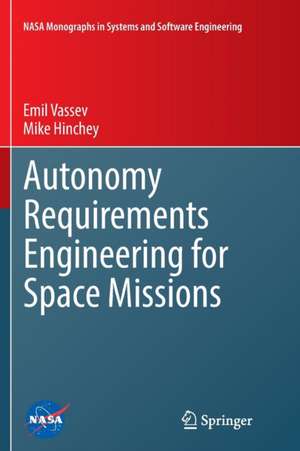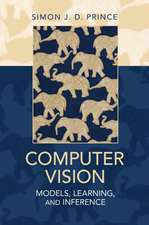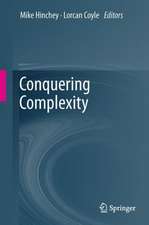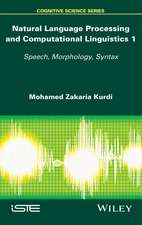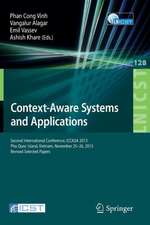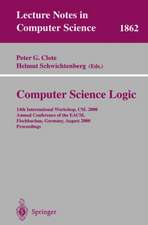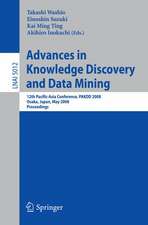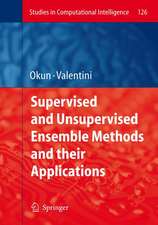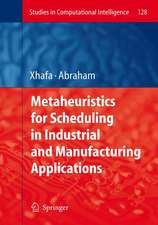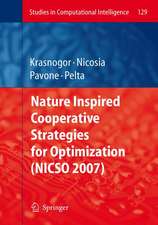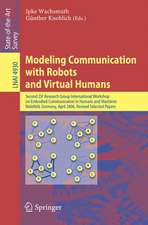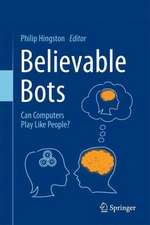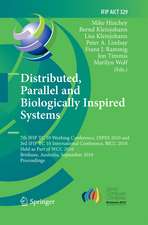Autonomy Requirements Engineering for Space Missions: NASA Monographs in Systems and Software Engineering
Autor Emil Vassev, Mike Hincheyen Limba Engleză Paperback – 10 sep 2016
Elicitation and expression of autonomy requirements is one of the most significant challenges the autonomous spacecraft engineers need to overcome today. This book discusses the Autonomy Requirements Engineering (ARE) approach, intended to help software engineers properly elicit, express, verify, and validate autonomy requirements. Moreover, a comprehensive state-of-the-art of software engineering for aerospace is presented to outline the problems handled by ARE along with a proof-of-concept case study on the ESA's BepiColombo Mission demonstrating the ARE’s ability to handle autonomy requirements.
| Toate formatele și edițiile | Preț | Express |
|---|---|---|
| Paperback (1) | 644.15 lei 6-8 săpt. | |
| Springer International Publishing – 10 sep 2016 | 644.15 lei 6-8 săpt. | |
| Hardback (1) | 650.40 lei 6-8 săpt. | |
| Springer International Publishing – 9 sep 2014 | 650.40 lei 6-8 săpt. |
Preț: 644.15 lei
Preț vechi: 805.19 lei
-20% Nou
Puncte Express: 966
Preț estimativ în valută:
123.26€ • 129.02$ • 102.59£
123.26€ • 129.02$ • 102.59£
Carte tipărită la comandă
Livrare economică 31 martie-14 aprilie
Preluare comenzi: 021 569.72.76
Specificații
ISBN-13: 9783319384030
ISBN-10: 3319384031
Pagini: 267
Ilustrații: XVII, 250 p. 38 illus.
Dimensiuni: 155 x 235 x 14 mm
Greutate: 0.38 kg
Ediția:Softcover reprint of the original 1st ed. 2014
Editura: Springer International Publishing
Colecția Springer
Seria NASA Monographs in Systems and Software Engineering
Locul publicării:Cham, Switzerland
ISBN-10: 3319384031
Pagini: 267
Ilustrații: XVII, 250 p. 38 illus.
Dimensiuni: 155 x 235 x 14 mm
Greutate: 0.38 kg
Ediția:Softcover reprint of the original 1st ed. 2014
Editura: Springer International Publishing
Colecția Springer
Seria NASA Monographs in Systems and Software Engineering
Locul publicării:Cham, Switzerland
Cuprins
Foreword.- Preface.- Acknowledgements.- Software Engineering for Aerospace- State of the Art.- Handling Autonomy Requirements for ESA Systems.- Autonomy Requirements Engineering.- Verification and Validation of Autonomy Requirements.- Requirements for Cognitive Capabilities of UAS.- ASSL Specification of Voyager Image-Processing Behaviour.- BepiColumbo Autonomy Requirements Specification with KnowLang.- Glossary.- Index.
Textul de pe ultima copertă
Advanced space exploration is performed by unmanned missions with integrated autonomy in both flight and ground systems. Risk and feasibility are major factors supporting the use of unmanned craft and the use of automation and robotic technologies where possible. Autonomy in space helps to increase the amount of science data returned from missions, perform new science, and reduce mission costs.
Elicitation and expression of autonomy requirements is one of the most significant challenges the autonomous spacecraft engineers need to overcome today. This book discusses the Autonomy Requirements Engineering (ARE) approach, intended to help software engineers properly elicit, express, verify, and validate autonomy requirements. Moreover, a comprehensive state-of-the-art of software engineering for aerospace is presented to outline the problems handled by ARE along with a proof-of-concept case study on the ESA's BepiColombo Mission demonstrating the ARE’s ability to handle autonomy requirements.
Elicitation and expression of autonomy requirements is one of the most significant challenges the autonomous spacecraft engineers need to overcome today. This book discusses the Autonomy Requirements Engineering (ARE) approach, intended to help software engineers properly elicit, express, verify, and validate autonomy requirements. Moreover, a comprehensive state-of-the-art of software engineering for aerospace is presented to outline the problems handled by ARE along with a proof-of-concept case study on the ESA's BepiColombo Mission demonstrating the ARE’s ability to handle autonomy requirements.
Caracteristici
Presents a unique approach to handling autonomy requirements Provides a unique perspective on how software engineers may efficiently build autonomous spacecraft capable of self-adaptation Addresses key issues in unmanned spacecraft engineering Delivers a comprehensive "state of the art" on software engineering for aerospace Includes supplementary material: sn.pub/extras
